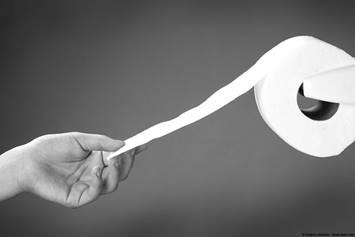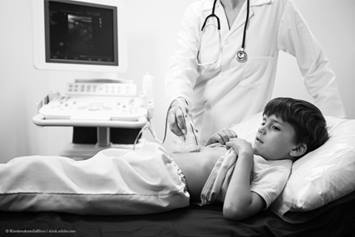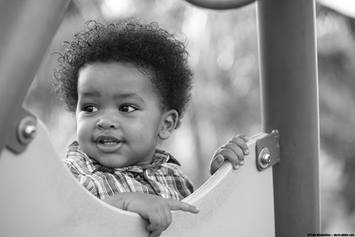Voiding Dysfunction
Voiding dysfunction means having trouble peeing. It can be hard to start, stop, or fully empty the bladder, causing discomfort or accidents.
What Is Voiding Dysfunction?
Going to the bathroom may seem like a simple thing, but there are actually a series of complicated signals that make sure the bladder does exactly what the brain is telling it to do. If any of these signals get out of sync, children can have difficulties holding their urine (urinary incontinence). If a child over the age of 4 has urinary incontinence, and physicians are unable to identify a specific anatomical or neurological cause, they may diagnose the child with voiding dysfunction.
No one knows what causes voiding dysfunction, but the condition can impact children physically, socially and psychologically. Left untreated, some types of voiding dysfunction can cause vesicoureteral reflux (VUR) and long term kidney damage. Nationwide Children’s Hospital offers many medical and behavioral therapies that can help children successfully regain control of their bladder.
Who Is at Risk for Having Voiding Dysfunction?
Daytime urinary incontinence is more common in girls than in boys. Children with voiding dysfunction may also experience bed wetting and other bowel accidents. There is also a strong connection between functional constipation and voiding dysfunction.
Types of Voiding Dysfunction and Their Symptoms
- Overactive Bladder (OAB). Children with OAB feel an urgent need to urinate even when their bladder may not be full, and may use the bathroom more than 10 times per day or about every hour. Most children with OAB will have urinary incontinence and urinary tract infections (UTIs), and sometimes these symptoms will continue even after the UTI is treated. Some children may (unsuccessfully) try to “hold it” by crossing their legs or using other physical maneuvers. OAB is the most common type of voiding dysfunction and occurs in about 22% of children between the ages of 5 - 7 years old.
- Dysfunctional Voiding. With this type of dysfunction, the muscles that control the flow of urine out of the body don’t relax completely, and the bladder never fully empties. This causes a range of symptoms such as daytime wetting, night wetting, a feeling that the bladder is always full, urgency, and straining to urinate. With severe cases of dysfunctional voiding, children may develop symptoms similar to those of a neurogenic bladder (a bladder that doesn’t function due to an underlying neurological cause), and be at higher risk for complications such as kidney infection and disease.
- Underactive Bladder. Children with an underactive bladder will urinate less than 3 times a day, or be able to go for more than 12 hours without urinating. These children have to strain to urinate because the bladder muscle itself is “weak” and doesn’t respond to the brain’s signal that it is time to go. Accidental wetting with underactive bladder is caused by the bladder becoming too full and overflowing.
How Is Voiding Dysfunction Diagnosed?
By the age of 4, most children are able to stay dry during the day. Voiding dysfunction will not be diagnosed until a child is older than 4 and has had no daytime accidents for at least 6 months after toilet training ends. As a first step, your child will undergo a physical exam to see if there are anatomical or medical reasons that could be causing daytime wetting.
If the examination doesn’t reveal any issues, your physician may order the following non-invasive tests:
- Urinalysis: your child’s urine will be tested for a urinary tract infection, which can cause incontinence and urgency.
- Kidney and Bladder Ultrasound: this imaging technology can show how well your child is able to empty their bladder.
- Uroflow EMG (electromyogram): this test shows how well the bladder is getting signals from the brain.
- KUB (Abdominal X-Ray): a type of X-ray used to see if constipation may be causing urinary incontinence.
If your child has complex symptoms, or symptoms that don’t go away with treatment, physicians may recommend these tests:
- Urodynamic testing: A catheter is inserted into the urethra (the hole where urine comes out) and the bladder is filled with saline (salt water) to help physicians see how strong the bladder is.
- VCUG (Voiding Cystourethrogram): This test looks at how well your child's bladder is working. VCUG can be performed in combination with Urodynamic testing.
- Magnetic Resonance Imaging (MRI): If physicians think your child may have neurogenic bladder, they may also suggest an MRI of spine. While this is a non-invasive procedure, most children will require anesthesia.
How Is Voiding Dysfunction Treated?
Depending on the type of voiding dysfunction, all conditions can be successfully treated with medicine, bladder “training” or both.
- Overactive Bladder (OAB): The first step in treating OAB is to start the child on a schedule where they use the bathroom every 2-3 hours while they are awake. Children are encouraged to urinate before the sense of urgency develops to help “retrain” the bladder. After a few months on the voiding schedule, physicians may prescribe medications that can help reduce the frequency and feeling of urgency.
- Dysfunctional Voiding: Most treatments for dysfunctional voiding focus on retraining the brain and helping the bladder relax. Children are taught that normal urination doesn’t involve squeezing the abdominal muscles, but instead, relaxing muscles in the pelvis and bladder. A timed voiding schedule is an important part of bladder retraining. Biofeedback and Kegel exercises (pelvic floor relaxation and contraction) can also effectively help manage dysfunctional voiding. The physician may also be prescribed medicine that helps the bladder relax.
- Underactive Bladder: Treatment for underactive bladder is primarily behavioral. Children are put on a timed bathroom schedule to go whether or not they feel the urge to urinate. Medications that relax the bladder can also be helpful. Children with very large capacity bladders who aren’t able to urinate may require short term catheterization. The use of Transcutaneous Electrical Nerve Stimulation (TENS) has been shown to help these children as well.
Another key part of successful treatment is to also address any constipation the child may have. Studies indicate that almost all children with voiding dysfunction also have constipation. When the constipation is treated, many children’s bladder symptoms will improve or go away.



